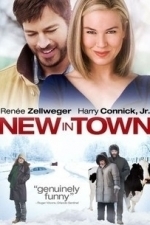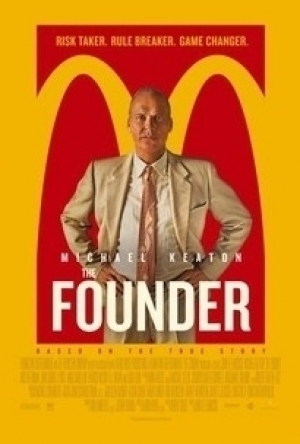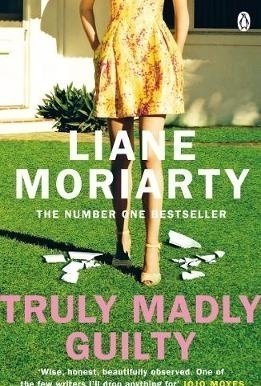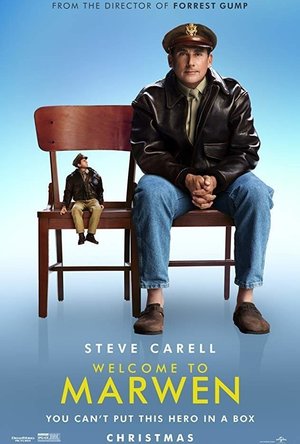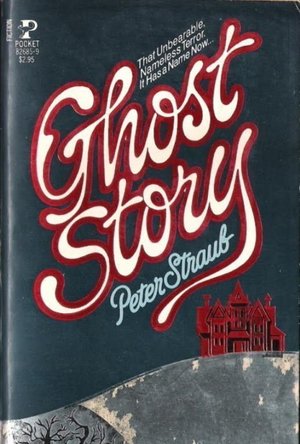
Metro Paris Subway
Travel and Navigation
App
Metro Paris Subway is the original and No. 1 selling application for getting around Paris, France. ...
Gareth von Kallenbach (980 KP) rated New In Town (2009) in Movies
Aug 14, 2019
Now that I’ve had time to mull over my response, I can’t help but remember the time I overheard a coworker compliment another coworker with, “You look cute.” To which the complimented coworker replied, “Thank you, but cute is for puppies. I was hoping for great.” Her inability to accept compliments graciously aside, I suppose, when you’re in your mid-40s, as this coworker was, cute just doesn’t cut it anymore. There does come a time, with maturity, one would rather hear they made a more indelible impression.
So what made this movie simply cute and not great? Maybe because I can’t answer the following questions with “Great!” But I could certainly answer them with “Cute.”
How was Renee Zellwegger, who plays Lucy Hill, a determined and driven Miami executive presented with the opportunty to restructure a manufacturing plant in New Ulm, Minnesota? Cute. Okay, I can say she’s extremely fit. Dresses impeccably in tailored power suits and works designer stilletos something fierce. But the whole package, complete with a pretty, but oddly stiff, face that winces more than it smiles, is just…cute.
How was Harry Connick, Jr., who plays Ted Mitchell, the union rep Renee’s character must negotiate with to facilitate the reorganization. Cute. Real cute with that beard. But that’s as enthusiastic as I can get and I love love love Harry Connick, Jr. His role is lowkey and what charm it allows him to cast toward Lucy is from afar. Personally, I think he would’ve been great with a piano and some singing. But that’s HCJ the singer. Alas, HCJ the actor only had a truck, birdshot and malfunctioning factory equipment. Thus, he remained just darn cute.
How was the supporting cast, headed by Siobhan Fallon, who plays Lucy’s quirky secretary, Blanche, and J. K. Simmons as the dour factory foreman, Stu? Cute. The only thing not cute about the townfolk were the sweaters and wallpaper. Ghastly would work better there. Their Minnesotan accents were spot-on (well, as far as I know, considering the only other Minnesotans I’ve ever heard were in other movies). Apparently we’re to believe New Ulm is full of either scrapbooking, Christian do-gooders bearing food or joyless, implacable factory workers who would rather drink beer, ice-fish or shoot crow.
How was the storyline? Cute. Predictable. An unoriginal romantic comedy that attempts to have message. An ambitious up-and-comer has her eye on the CEO title and thinks playing the hardnose in a cost-cutting, streamlining reorganization project will impress the boss. Hardnose in high heels comes up against a tight-knit community in flannel that’s not impressed with her wardrobe, her multi-syllabic vocaulary or her city girl naivete at all. Despite the arctic attitudes and scenery, there’s thawing on both sides as Lucy is drawn into the fold by Blanche and her scrapbooking matchmakers. She and Ted take turns rescuing each other and eventually Lucy discovers there’s a time to be all-business and there’s a time to be human, and her success comes when she finds the balance between both.
So, while I was hoping I could tell you this movie was great, I can’t. Maybe with more story development, more tangible chemistry between Ted & Lucy, it would have made a more indelible impression. For this lighthearted rom-com, cute will just have to do.

London Tube
Travel and Navigation
App
London Tube is the original and No. 1 selling application for getting around London. ◉ London...
Lee (2222 KP) rated The Founder (2017) in Movies
Jul 26, 2017
Michael Keaton is Ray Kroc, a hardworking salesman who always seems to be on the road while his bored wife (Laura Dern) is at home. Repeatedly getting the brush off from restaurant owners who don’t want to buy his amazing new five-spindled milkshake machine and frustrated by the slow, unreliable service from the drive-ins where he goes to get his lunch. For this part of the movie, we’re actually pretty sympathetic with Ray as he struggles in his lonely, boring, unfullfilling job, listening to motivational records in motel rooms as he drifts off to sleep. And then he gets a call from two brothers, Dick and Mac McDonald. They don’t just want to buy one of his milkshake machines, they want to buy at least six in order to cope with demand in their restaurant. Ray puts down the phone and his mind immediately goes into overdrive – what kind of restaurant have these guys got that’s producing this kind of demand? He pulls out a map and looks them up – they’re in San Bernadino California, so he heads off in his car to pay them a visit.
When he arrives, the place is packed with customers queuing for food. As Ray joins the queue a woman assures him that he won’t have to wait long and sure enough, after placing his 15 cent order for a burger, fries and soft drink (bargain!), he promptly gets his order within 30 seconds – served in a paper bag, no plates, no cutlery. He thinks there must be some mistake and it’s pretty amusing to see the bemused look on his face as he struggles to accept the concept that we now all take for granted. Fast, cheap food that you can eat absolutely anywhere you want – in your car, at the park, it’s up to you.
Ray offers to take the brothers out to dinner so that he can hear their story. It’s a wonderful, captivating story too, one that could so easily have been the entire movie. The brothers have such a good rapport as they passionately talk about what they’ve worked to achieve. Moving their restaurant to where it is now, developing their own machines for applying perfect amounts of ketchup and mustard into each bun and spending six hours sketching out potential restaurant layouts on a tennis court while their restaurant staff choreograph their optimised cooking routines. Everything has been tweaked to perfection, even down to the exact cooking time and temperature for their fries. After sleeping on all this information, Ray goes back to the brothers early the next morning and offers them the idea of franchising. But, it’s something they’ve dabbled in before and gave up on, having felt that they had no control over the quality and attention to detail that they pride themselves on in their own restaurant. Eventually Ray wins them over though and a contract is drawn up. The brothers get final say on everything and get half a percent of the profits but it’s up to Ray to setup the franchises and find the people to run them.
It’s a slow, hard process though and although Ray does setup a few successful restaurants, he soon becomes frustrated at the lack of money he seems to be making and the lack of control he has on the decision making process whenever he wants to save costs. The McDonald brothers just seem to keep saying ‘no’! But after he receives some business advice, telling him he should be concentrating on buying the land that the restaurants are on rather than the burgers being cooked, the tide begins to turn. He eventually becomes powerful enough to overpower the brothers, trademark their name, and generally take credit for everything the brothers worked for and built, eventually putting them out of business.
Kroc becomes ruthless, and a complete arsehole. The brothers did eventually make some decent money out of their final deal with Ray, but it certainly wasn’t the 100 million dollars a year they could have been making if they’d been treated right. You really feel for them, as they completely lose control of everything. But you can’t help wondering if things would have worked out that much different for them if they had never met Ray at all. Their restaurant will certainly have continued to do well for a while, but by focusing on just their one restaurant, how long before somebody else stole their idea and ran with it, somebody with the drive and vision to make real money like Ray, leaving them with no money settlement at all? After all, as the motivational LP that Ray listens to clearly pointed out at the start of the movie, “Nothing in the world can take the place of persistence, talent will not, nothing is more common than unsuccessful men with talent …”.

Tracks4Africa Guide
Reference and Travel
App
Welcome to the most detailed travel guide for overland travel in Africa. This offline app offers a...
Kristy H (1252 KP) rated Truly Madly Guilty in Books
Feb 13, 2018
So we all know the drill by now. Liane Moriarty is a well-known master of dramatic suspense, especially at capturing the tension that hides behind ordinary lives. I went through a period where I read all of Moriarty's books; [b:What Alice Forgot|6469165|What Alice Forgot|Liane Moriarty|https://d.gr-assets.com/books/1377159022s/6469165.jpg|6659752] and her last novel, [b:Big Little Lies|19486412|Big Little Lies|Liane Moriarty|https://d.gr-assets.com/books/1399582436s/19486412.jpg|27570886], rank as two of my particular favorites. Anyway, Moriarty has become rather famous in the book world, with [b:Big Little Lies|19486412|Big Little Lies|Liane Moriarty|https://d.gr-assets.com/books/1399582436s/19486412.jpg|27570886] being made into a 7-episode HBO TV series, starring Reese Witherspoon and Nicole Kidman.
Of course, with such fame comes great responsibility. And pressure. Can a new work live up to the hype and excitement of the previous? This one will divide readers. It certainly has all the hallmarks of a typical Moriarty novel: a cast of women (and men) living ordinary lives on the surface, with a hidden veneer beneath. There's a secret layer to all of Moriarty's characters, though the drama associated with those in [b:Truly Madly Guilty|26247008|Truly Madly Guilty|Liane Moriarty|https://d.gr-assets.com/books/1467061262s/26247008.jpg|49997474] may not live up to some of her other novels.
First of all, this book will frustrate you. The beginning is incredibly maddening, as Moriarty starts leading up to the events that happened at the barbecue... in slow, excruciating detail. As she does so, we alternate chapters with the present, with the point-of-view told from our various characters. We have Erika, a slightly repressed accountant whose life has been formed around her stressful childhood as the only daughter of her hoarder mother, and Erika's husband, Oliver, her equally steady mate, who grew up with alcoholic parents and longs for the same order in life as Erika. Clementine and Erika have been friends since childhood, when Clementine basically felt Erika's friendship was forced upon her by Clementine's social worker mother, who felt bad for Erika and her flea-infested home. Clementine is a cellist and a bit of a free spirit, but she's balanced by her more grounded husband Sam, who works in business at an energy drink company. They are parents to five-year-old Holly and two-year-old, Ruby. And then, finally, we have Erika and Oliver's neighbors, Vid and Tiffany. Swarthy, wealthy Vid is a joyous, open man who loves sharing his home (and his food) with friends and family. His gorgeous wife Tiffany is his pride and joy. Their quiet 10-year-old daughter, Dakota, just loves to read.
See how I just distracted you from the events of the barbecue by a description of the characters? Imagine that, for pages and pages! It's a great technique, don't get me wrong, but there was one point where I truly wanted to fling the book across the room. "JUST TELL ME WHAT HAPPENS!" I actually shouted in my (thankfully empty) bedroom. I've read some reviews that state that the big reveal, when it happens, isn't shocking enough, but I disagree: I think that event would certainly change my life and haunt my dreams (no more than that; a spoiler will truly ruin this book).
So while this novel can be a bit frustrating, it really is a Liane Moriarty book. It's compulsively readable. At first, I thought it was a very detailed look at three self-involved couples, but over time, I realized I had really fallen for Erika and Oliver and eventually, Tiffany and Vid, too (and Dakota, I loved Dakota!). Moriarty has a way of humanizing her characters and differentiating each from another: they all stand as individuals. Even Sam and Clementine, who were my least favorites, were their own people. It's the tiny details and pieces about each that she sticks in that really build your picture of each character in your mind. Much of the book takes place in the rain, and I could truly visualize each character and every event, unspooling, in this torrential Sydney downpour.
Overall, this book connected with me less on a dramatic, "oh my gosh" level (though that exists) but more on an emotional one. It speaks to the guilt we can all feel about life events--adults and kids alike--and potentially carry with us all of our days. Not a lot may happen in the book, per se, yet it's really a strong story of friendship, marriage, life, and loss. When I framed it in that perspective, versus looking purely for moments of dramatic tension, I realized I'd really enjoyed it. A strong 3.5 stars and definitely worth picking up. Just keep an open mind.
<a href="http://justacatandabookatherside.blogspot.com/">My Blog</a> ~ <a href="https://www.facebook.com/justacatandabook/">Facebook</a>; ~ <a href="https://twitter.com/mwcmoto">Twitter</a>;

Paris Metro for iPad
Travel and Navigation
App
Paris Metro for iPad is the original and No. 1 selling application for getting around Paris, France....
Lee (2222 KP) rated Welcome to Marwen (2018) in Movies
Jan 11, 2019
I almost did miss out on seeing Welcome to Marwen though, due to the large number of mediocre reviews I read. In fact, it doesn't seem to have appealed to the general public enough to keep it in the cinemas for very long at all. Having only opened here in the UK on New year's Day, the screening I went to last night was actually the last screening being shown at that particular cinema, and I was one of only a handful of people there watching it. What prompted me earlier this week to give it a go though was after listening to director Robert Zemeckis talk passionately about it, along with his other movies. It was a gentle reminder that this guy is responsible for so many of my favourite movies, and I decided to give it a shot. While I'm glad I did, and overall I enjoyed it a lot, I can certainly appreciate where some of the criticism is coming from.
Welcome to Marwen is based on the true story of Mark Hogancamp, and the 2010 documentary on his life title 'Marwencol'. Mark (played in the movie by Steve Carell) suffered a severe beating at the hands of a bunch of thugs following an altercation in a bar regarding his lifestyle choice of being a cross dresser. After nine days in a coma, the beating understandably left him traumatised, but it also left him without any memory his life prior to the attack - once a talented war illustrator, he now can't even write his own name. But Mark remained an artist, building a miniature World War II Belgian town called Marwen outside his home and populating it with dolls. Using them he creates scenes and a story which he then photographs, helping him to express and deal with his lack of memory, the pain and trauma he now experiences, and the relationships with the people around him. Captain Hogie is a fighter pilot, an Action Man/GI Joe figure representing Mark. The residents of Marwen are all women, alter egos of various people who have helped him in the past or continue to help him. The toyshop worker who supplies him with the dolls, a friend he met during rehab, a co-worker, his carer and the woman who came to his aid following his beating. The town is also terrorised regularly by a bunch of Nazis, representing the men responsible for attacking him. And whenever the Nazis are beaten and killed, they are brought back to life by a Belgian witch! When a woman called Nicol (Leslie Mann) moves in across the street, she strikes up a wonderful friendship with Mark, earning her own doll in the town of Marwen where she strikes up a relationship with Captain Hogie. As the movie progresses, Mark has to deal with the pending sentencing of his attackers and the anxiety surrounding an upcoming exhibition showcasing his photographs. Marwen, and its inhabitants, help him to work through all of this.
The scenes and stories in Marwen that Mark is creating and imagining are brought to life in the movie using impressive motion capture CGI which, if you've seen the trailer or any clips of the movie, will know looks incredible. When you think about the animation Zemeckis and his team were producing for The Polar Express back in 2004, through Beowulf and Disney's The Christmas Carol to where we are now with this movie, it's simply amazing how far we've come. Perfect recreations of the movie characters in doll form, moving and interacting with the real surroundings and the CGI is just faultless. But for the earlier parts of the movie, this aspect of the movie for me was for a while the most frustrating and dull. The movie opens with a big scene as Captain Hogie crashes his plane, comes across a group of Nazis before being rescued by the girls of Marwen and we get a few more of these lengthy sequences early on, with only short glimpses of Mark and his life inbetween. I found myself become interested and engrossed in the life of Mark, wanting to learn more, only to be snapped out of it by a not so interesting scene involving some dolls. Thankfully, the length of those scenes reduces over time, and as you begin to empathise more with Mark and his life, you start to appreciate more the reasons why a certain scene is playing out the way it is. At that point, I began to really appreciate and enjoy them a lot more.
My only issue overall with this movie is that I wouldn't really know the age range to pitch it at, and that's possibly why it doesn't appear to have done so well with audiences. You've got the fun elements involving the dolls and the CGI, but then some of these scenes do involve a fair bit of violence which actually appears quite realistic at times. Then you've got the trauma and the flashbacks involving the beating - the movie doesn't go as dark as it could, or maybe should have done with that subject matter, but I certainly wouldn't say this is a fun movie for all the family to enjoy. Which is a shame really because I did enjoy this a lot. Steve Carell does an outstanding job, and Leslie Mann is just wonderful as always. It's opened my eyes to some of the consequences of brain injury and made me want to learn more about Mark Hogancamp, which parts of the movie are true and which parts were added for entertainment. I'll be sure to try and watch the documentary at some point.
Hadley (567 KP) rated Ghost Story in Books
May 14, 2019
Even if it seems so, Wanderley is not the main character of this book, instead, we meet four older gentlemen who have been friends the majority of their lives: John, Lewis, Ricky and Sears. The four have created what they like to call 'the Chowder Society,' where they meet up in suit and tie at one of their houses to tell ghost stories. Sears tells one ghost story that will haunt them the rest of the book about his time as a teacher in a rural town known as Elmira: "Well, one of the most dreadful things in my life happened to me there, or it didn't happen and I imagined it all, but anyhow it scared the pants off me and eventually made it impossible for me to stay on. This is the worst story I know, and I've kept it locked up in my mind for fifty years."
After that story, strange things begin to happen in Milburn; a farmer named Elmer Scales, reports that his sheep have been slaughtered by having their throats slit and completely drained of blood, but there are no footprints nor blood stains where the sheep were killed: " 'Their throats were cut,' Elmer said to his wife. 'What did I tell you? Some crazyman's been out here. And -' his voice rose ' - a crazyman who can fly, because he didn't leave no prints.' "
When the reader finds out that the four life long friends have a dark secret that has seem to come back to haunt them, we witness them being killed off by a supernatural force, one by one. This story brings not only a great cast of characters and amazing story telling, but also twist and turns that are not seen from a mile away, like most paranormal thrillers have today.
The supernatural force readers are introduced to is a shape shifter, who takes on forms from a werewolf to a vampire " When he took off the dark glasses his eyes shone a uniform golden yellow. " But the book is not lacking on ghosts, either : "Then she saw a figure moving around out there and Nettie, who understood more than even her sister credited, fearfully watched it approach the house and barn. She uttered a few choked sounds, but knew that Rea would never hear them. The figure came nearer, hauntingly familiar. Nettie was afraid it was the boy from town Rea talked about - that wild boy in a rage that Rea had named him to police. She trembled, watching the figure come nearer across the field, imagining what life would be like if the boy did anything to Rea; and then squawked in terror and nearly tipped over the wheelchair. The man walking toward the barn was her brother Stringer, wearing the brown shirt he'd had on the day he died: it was covered with blood, just as it had been when they'd put him on the table and wrapped him in blankets, but his arms were whole."
The entire story takes place in the town of Milburn, with a few scenes outside of it, but because of this, there are so many secondary characters introduced that the reader may find themselves back tracking through the book just to remember who all of them are. On top of that, a lot of the characters are so much alike, that description can't even help tell who is who. Even our four main characters have similar descriptions, other than girth, that it takes a couple of chapters for readers to put a face to a name. Only some secondary characters become important enough to remember near the end of the book, this including a teenager named Peter.
'Ghost Story' is among the few paranormal books that can stand on it's own. There are scenes of hallucination that out-do those of the top paranormal writers of today. One of the most memorable scenes is with the character Lewis: "Lewis moved back and forth on the floorboards, willing his friends to return with the farmer's car. He did not want to look at the covered shape on the bed; he went to the window. Through the greasepaper he could see only vague orange light.. He glanced back at the sheet. 'Linda, ' he said miserably. " - the scene quickly changes - "He stood in a metal room, with gray metal walls. One light bulb hung from the ceiling. His wife lay under a sheet on a metal table. Lewis leaned over her body and sobbed. 'I won't bury you in the pond,' he said. 'I'll take you into the rose garden.' He touched his wife's lifeless fingers under the sheet and felt them twitch. He recoiled. "
When the ghost story is finally revealed from the main characters' past, pieces of the puzzle begin to fit together. To not give away too much, here is a portion of that story: " 'She said she was lonely,' Ricky said. 'Said she was sick of this damned town and all the hypocrites in it. She wanted to drink and she wanted to dance, and she didn't care who was shocked. Said this dead little town and all its dead little people could go to hell as far as she was concerned. And if we were men and not little boys, we'd damn the town too.' "
While our main characters are being killed off one by one, the town of Milburn is going through an odd blizzard that seems to put everyone on edge: " People settled down in front of the television and ate pizzas from the freezer and prayed that the power lines would stay up; they avoided one another. If you looked outside and saw your next-door neighbor fighting up his lawn to get to his front door, he looked unearthly, transformed by stress into a wild ragged frontier version of himself: you knew he'd damage anyone who threatened to touch his dwindling store of food. He'd been touched by that savage music you had tried to escape, and if he looked through your Thermopane picture window and saw you his eyes were barely human."
Although 'Ghost Story' was published in 1979, it still has a big impact on the way the paranormal genre is written today. Straub not only makes a convincing story line, but he also makes characters that the reader can actually care about. Even when we find out what has been going on in the small town of Milburn, the reader can still feel a very real threat from the supernatural force within it. 'Ghost Story' is by far the best paranormal thriller I have ever read. I highly recommend this book to anyone who believes that the past can come back to haunt you.
For more reviews by me, please check out my blog at goreandtea.com
